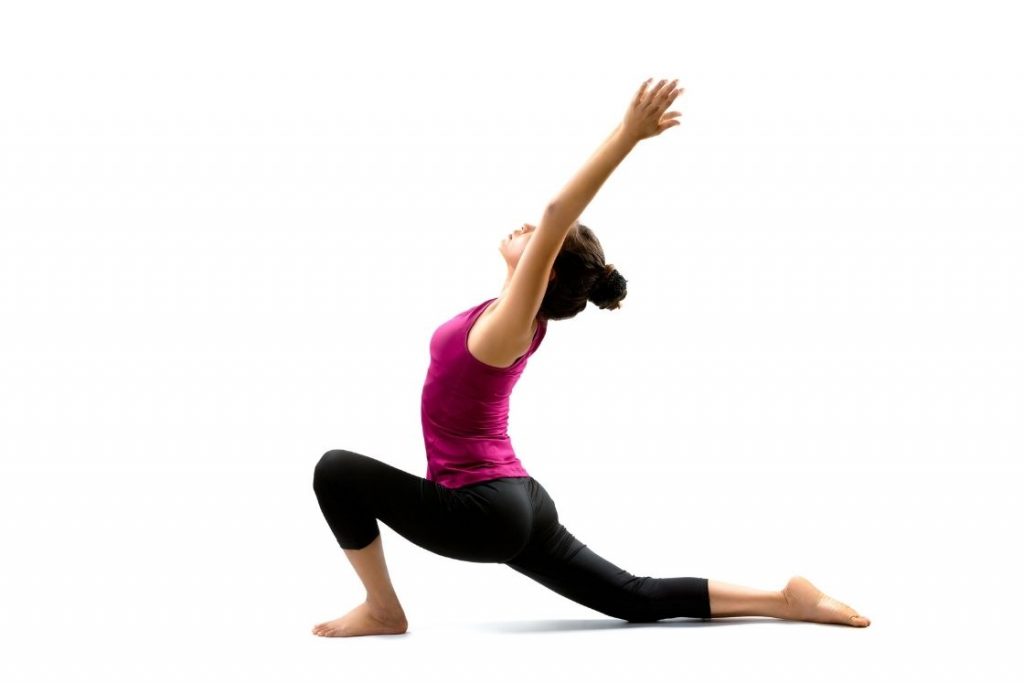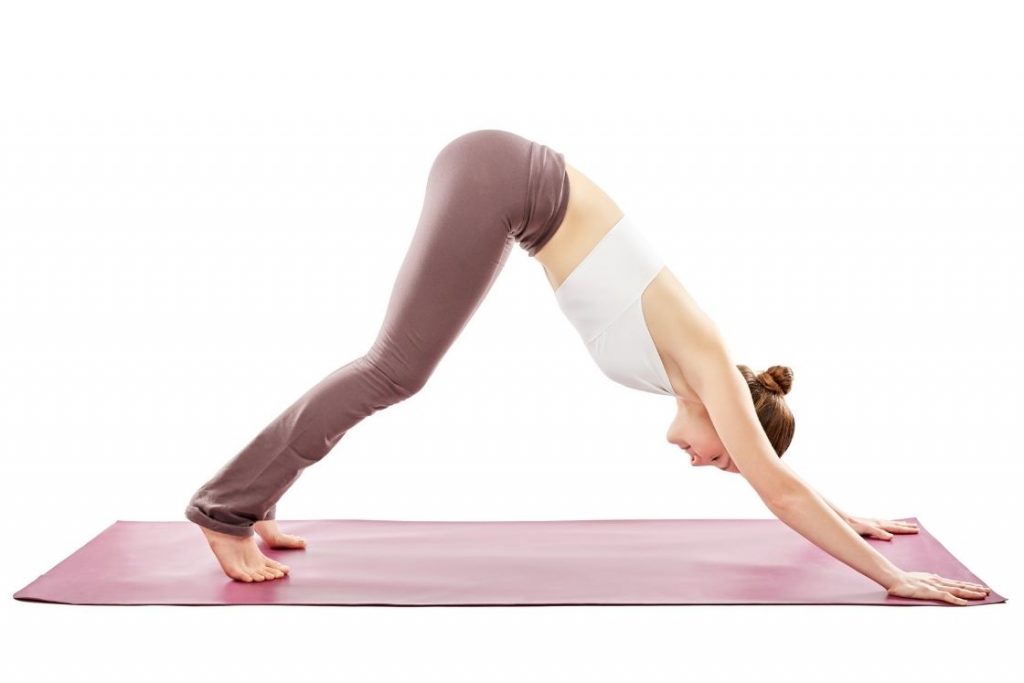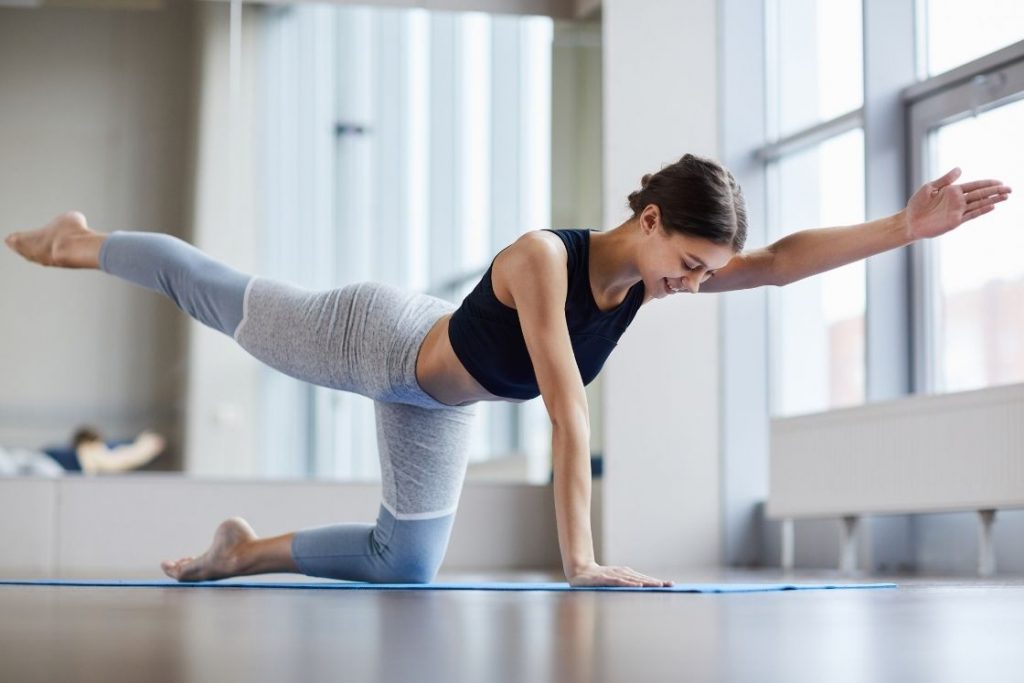- Shiva and Shakti
- Is it only for women?
- Shakti Yoga Practice
- Benefits
- Shakti Yoga Sequence
- Connecting with shakti

Yoga poses are known to address many prominent mental, physical and biological systems in your body. These benefits of yoga generate your strength, stamina, concentration and flexibility. But Shakti yoga addresses the existential energies within you that impact your psycho-behavioural traits.
Shakti yoga is a unique style of yoga that emphasizes smooth flow between poses to embrace the divine energy residing in each of us.
The concept of Shakti yoga is based on this very conceptual idea of Shakti. Shakti yoga is establishing a flow (which itself is a feminine trait, as opposed to rigid/static,) in the yoga routine. The flow in shakti yoga practice can be introduced in two ways;
- Modifying the static motion of the yoga poses to a free-flowing form.
- Sequencing the poses in a manner that can accommodate a smooth flowing transition.
Breathing exercises and mantra chants along with mindfulness are the core of shakti yoga. As you transition between poses, you continuously utter sacred words and focus on your breathing. Although Shakti yoga encompasses many yoga poses, the sun salutation, or Surya Namaskar, is the fundamental sequence.
The purpose of shakti yoga is to increase your Pranic energy (vitality) so you can feel the divine within and connect with that energy.
The concept of Shiva and Shakti
The masculine energy, aka Shiva, is responsible for logic analysis and reasoning, discipline, confidence, objectivity, willpower, survival, boundary, assertion and such.
While the Shakti refers to the feminine energy and Hindu goddess who is the source of creative energy in the universe. It’s the energy (or combination of energies) responsible for creation, expression, compassion, intuition, sensation, freedom, flow, kindness, acceptance, sacrifice, reflection and forgiveness.
This contrast of the mental-behavioural traits of shiva and shakti is represented by different concepts in different belief systems. The Yin and Yang, then the left brain and the right brain, Ida and Pingala Nadi are such examples that represent the feminine-masculine contrast.
Is shakti yoga only for women?
Since the term Shakti refers to the feminine energy, and in Hindu mythology, the divinity of the goddess, people often attach a gender specification to shakti yoga. So let’s clear that confusion once and for all. Shakti yoga is not just for women but for both genders.
It is a common mistake to confuse the feminine and masculine energies, with the feminine and masculine gender. But in reality, both genders have both energies. And shakti yoga gives you the ability to establish a balanced connection with both the energies, that make for a successful being.
Shakti yoga will help you tap into your feminine energy and establish a conscious connection with it. This establishment of the connection is much needed for people who are governed mostly by their masculine energy.
What makes up shakti yoga practice?

Shakti yoga is a free-flowing improvisation yoga. This yoga form blends free movement and Dance movements, to improvise the yoga structure and sequence.
The technique of Shakti yoga is much like vinyasa yoga and Tai Chi. It takes the core postural forms of yoga and strings them together in a flow and rhythm, that forms a well-sequenced, and continuous movement.
Shakti yoga greatly emphasizes the personal experience. It means, in shakti yoga, you will not be following a strict set of instructions. Rather you will take lead from your physical convenience and mood, and accordingly let your body flow in a movement that feels restorative and constructive.
Note that the flow of Shakti yoga is such that it helps you tap only into the feminine side of your life force. Thus practicing this form will specifically help you work on your feminine traits like creation, compassion and expression.
The common features
Shakti yoga generally includes the normal hatha yoga and ashtanga yoga Asanas. Although Shakti yoga can be merged with other forms like power, rocket and hot yoga.
These are the specific features that make a yoga sequence, a Shakti yoga sequence.
- The static holds are modified with subtle rhythmic movements.
- The order of the poses in the sequence have high importance
- All the poses from the start to last, are tied together. You move from one pose to another through a seamless transitional flow.
- Breathing synchronization with movement is very important.
- The poses can be modified in a way your body and mind deems fit.
- Includes contemporary free movements and dance movements for improvisation and transition.
- The transitions and modifications are never forced but comes uniquely natural to the practitioner.
- The entire session of practice is in a continuous flow.
- Shakti yoga has the maximum mind-body-energy synchronization.
Benefits of Shakti yoga
In our repetitive and monotonous lifestyle, Shakti Yoga can bring a refreshing change. The shakti flow can help in exploring the physical inclinations, not our body, and learning new forms of expression. It is also an exemplary helpful tool to unwind stress and restore vigour to our mind and body.
Our work life and regular commercial stress put our minds into a mechanical framework, distancing us from the feminine essence of our life force. Shakti yoga reinvents the connection with our feminine spirit, triggering a sense of creation, compassion, expression and freedom.
Shakti yoga in general (focusing on just the form of free flow,) is highly recommended for different physical, mental and behavioural benefits:
- Improved blood circulation
- Efficient respiration
- Highly enhanced nervous functioning
- Improved muscle balance and flexibility
- Weight loss and nutrition management
- Calmness of mind
- Develop an innate sense of rhythm
- Extraordinary balance
- Synchronized breath and body movement
- Improved musculoskeletal control in movement
- Increased intuition and compassion
- Acquire a sense of efficient physical expression
How does it work?
While the normal static holds of yoga activate specific pressure points, the Shakti movement promotes energy flow through pressure gateways.
The Shakti yoga sequence focuses more on your muscle flexibility, balance, agility and dexterity. These musculoskeletal features will help you avoid injuries during fast strenuous movements.
The flowing movement of this yoga form also has a potent stabilising effect on blood flow. Shakti yoga promotes efficient blood to all parts of the body, for proper nourishment.
Shakti yoga also puts considerate emphasis on breathing patterns. It ensures that your flow and movement is effectively synchronized with your breathing pattern. This helps your muscles receive appropriate levels of oxygen for performing the tasks they are supposed to.
Finally, the synchronized flow directly Benefits the nervous system. Shakti yoga has monumental benefits to your nervous system that eventually generate psycho-behavioural influences.
These benefits collaborate to develop neuro-endocrine stimuli that encourage behaviors of expression, compassion, creation and all the other feminine traits.
A Gentle shakti yoga sequence

The Shakti sequence can include different levels beginner, intermediate and advanced yoga. You will obviously be selecting poses more specific to your needs.
You can check the following example sequence.
- Stand in Mountain pose.
- Maintain erect spine, puff your chest out
- Slowly raise your hands by the sides of your body, and raise them straight overhead.
- You can hold your hands together, and gently arch back from your hip.
- Now slowly keeping your upper body straight bend down to forward bend.
- Hold the ground, and slightly break your knees, and wiggle your body/torso to loosen the tension.
- Holding the ground come in a lunge, with your right leg folded forward and left leg stretched behind.
- Place your right knee on the ground, sit balancing on your right heel, and lift your hands off the ground.
- Lift your hands slowly off the ground by the sides of your body and raise them overhead, and join them in Anjali Mudra.
- Arch back to stretch your hips.
- Release the arch, hold the ground with your hands, and slide into pigeon pose.
- Now lift up your head, and turn your upper body to your left, and stretch your left hand in line with your left leg, and turn your head towards your left shoulder.
- Slowly return to the Initial lunge
- Bring the left leg forward and get back up to forward bend.
- Once again repeat the lunge to pigeon stretch, but this time with the left leg bend forward and right leg stretched back.
- Again return to the forward bend.
- Now stretch back both the legs and drop your knees and toes to the ground.
- Gently touch your chin an chest to the ground as well, with your hands touching the floor at the sides of your chest.
- Your pelvis should be lifted off the floor, with buttocks in the air.
- Stay in this pose for few breaths, as you lift up your toes and rock your lower legs back and forth by drawing them toward you thighs and away.
- From this pose get into the cobra pose.
- From cobra pose rise up to upward facing dog and back to downward facing dog.
- From downward facing dog drop your knees and get into Cat-Cow pose.
- In Cat-Cow pose extend your alternating hands and legs outward.
- Slide to child’s pose from Cat-Cow, and then to extended puppy.
- Return to child’s pose, and from child’s pose sit up in thunderbolt pose.
- Add hand movements and overhead Anjali Mudra, while in thunderbolt pose.
- You can even add half torso twists, like the half-lord of the fish pose, while sitting in thunderbolt pose.
- Recline back to reclining hero pose.
- Gently unlock your legs to go to Savasana.
- While lying supine do a couple of rounds of lying supine twists.
- Follow it up with bridge pose, and return to lying supine.
- Rest a bit in reclining bound angle pose.
- Then raise your body up to shoulder stand.
- While in shoulder stand split open your legs sideways and, back and forth.
- Drop back your legs to plow pose, bend your knees and bring them by the sides of your ears.
- Put your legs back up in shoulder on shoulder stand, and then release to Savasana.
- Rest in Savasana for sometime and finish your sequence.
How to connect with your shakti?
Why involve these practices you might ask. The answer is simple. If you had the average benefits of yoga in mind, then you would stick to a conventional style of yoga such as hatha yoga. If you are looking for Shakti yoga, clearly you have some specific requirements. Maybe something like improving your physical expression, flowing flexibility, and a more intuition and compassion driven mental approach.
The construct of Shakti yoga is such that its practice will help you connect with your feminine energies, your Shakti. But yoga alone will not suffice. To truly awaken the mighty Shakti within you, you must compliment your yoga efforts with certain lifestyle habits.
1. Increase your capacity to receive
Receiving is an important practice that helps you connect with your feminine energy. Receiving opens the doorways to compassion, acceptance and forgiveness.
In a conversation pay more attention to listening, rather than making your point. Don’t be rude when people approach you, be more welcoming. Lower your pride and comfortably receive help from others. In short be more perceptive towards different types of words, actions and thoughts from others.
2. Take dancing lessons
Dancing is a strong form of physical expression, some would argue it’s the strongest. Thus taking dance lessons will loosen you up and make you comfortable with your body. This will build your ability to express physically, and directly benefit the practice of Shakti Yoga. Shakti yoga often uses many dance steps to improvise the poses. Thus dancing and Shakti Yoga complement each other pretty well.
3. Engage in creative activities
The force of creation is often considered the most powerful of all divine feminine traits. Once you can unlock your creative energy it will create a ripple effect across your mind-body stimulating other feminine traits as well.
Creative activities could include a great range of things, from writing, painting, handcrafting, designing to cooking, knitting and embroidery. Basically, any activity that creates something is creative. Typical masculine activities like constructing buildings, forging metal ware and building furniture are also creative activities.
4. Engage in spontaneous activity
Being thoroughly stuck within the boundaries of a routine is a typical masculine thing. If this nature becomes continuously permanent in your life, the feminine energies will lose their potency on you. Once in a while dare to scrap your routine and just spontaneously jump into some impractical activity.
5. Contribute within your means to the underprivileged
Know that contribution is bigger than success. If you have received certain benefits from society and nature, you too have a responsibility to contribute something in return. It is a moral obligation of us humans, at least it should be.
The contribution will teach you the feminine traits of sacrificing, providing and nurturing. You don’t have to contribute something monumental. You are not driving a PR campaign but personal development. So something like cooking a nutritious dinner for a group of homeless people should suffice. After all what can be more nurturing than feeding!
6. Interact with nature
We call nature, mother nature, because it constantly protects us, provides us and nurtures us. And when we cross our boundaries it doesn’t fail to punish us. There is an immense degree of feminine energy within nature, and thus interacting with it in any form will awaken your Shakti. It could be gardening or it could be an environment cleaning campaign.
Final Thoughts
Shakti yoga isn’t necessarily a difficult form of yoga. It requires nothing more than average strength and flexibility. However, it still cannot be considered as a beginner yoga style. There are three things that you absolutely must know before considering taking Shakti yoga class.
The prerequisites of Shakti Yoga are built on the fact that it needs you to improvise on the mat. The improvisation can range from being subtle to elaborate. However like any improvisation, on Shakti Yoga too, you must have a thorough understanding of the basic asana theories. The knowledge of basic theories will prove elemental in keeping you out of harm’s way while improvising.
Additionally, you must also be in tune with your physical ability. You must know how your body feels in different poses, stretches and twists. This will help you achieve a seamless and injury-free flow. Finally, to bring movement on the mat you must have appropriate grip and balance.




